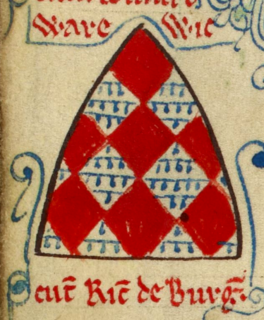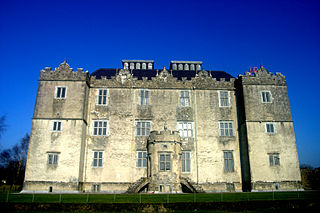
Marquess of Sligo is a title in the Peerage of Ireland. It was created in 1800 for John Browne, 3rd Earl of Altamont. The Marquess holds the subsidiary titles of Baron Mount Eagle, of Westport in the County of Mayo, Viscount Westport, of Westport in the County of Mayo, Earl of Altamont, in the County of Mayo, Earl of Clanricarde and Baron Monteagle, of Westport in the County of Mayo. All these titles are in the Peerage of Ireland, except the Barony of Monteagle, which is in the Peerage of the United Kingdom. The latter peerage entitled the Marquesses to a seat in the House of Lords prior to the House of Lords Act 1999. The Earldom of Clanricarde was inherited by the sixth Marquess in 1916 according to a special remainder in the letters patent.

Earl of Clanricarde is a title that has been created twice in the Peerage of Ireland, first in 1543 and again in 1800. The former creation became extinct in 1916 while the 1800 creation is extant and held by the Marquess of Sligo since 1916.

The House of Burke is the Irish branch of the Anglo-Norman noble family known as de Burgh.

William de Burgh was the founder of the de Burgh/Burke/Bourke dynasty in Ireland.

Richard Mór de Burgh, 1st Lord of Connacht, was a Hiberno-Norman aristocrat and Justiciar of Ireland.
William de Burgh, 3rd Earl of Ulster and 4th Baron of Connaught was an aristocrat in the Peerage of Ireland. His murder at age 20 led to the Burke Civil War.

Clanricarde, also known as Mac William Uachtar or the Galway Burkes, were a partly Gaelicised branch of the Norman originated House of Burke in Ireland. The term was important in Ireland from the 13th to the 20th centuries.
Ulick na gCeann Burke, 12th Clanricarde and 1st Earl of Clanricarde, was the son of Richard Mór Burke the 9th Clanricarde by a daughter of Madden of Portumna

Ulick John de Burgh, 1st Marquess of Clanricarde KP, PC, styled Lord Dunkellin until 1808 and known as The Earl of Clanricarde between 1808 and 1825, was a British Whig politician.

Richard Burke, 4th Earl of Clanricarde was an Irish nobleman and politician. He was the son of Ulick Burke, 3rd Earl of Clanricarde and Honora Burke. Knighted in 1602 for his exploits as leader of the English cavalry during the Battle of Kinsale, he would later serve as Governor of Connaught from 1604 to 1616, and as a member of the Privy Council of Ireland. Having established himself as the largest and most influential landowner in Connacht, his later life was characterized by animosity between him and an increasingly hostile and acquisitive Dublin government.
General John Thomas de Burgh, 13th and 1st Earl of Clanricarde PC (Ire), styled The Honourable until 1797, was an Irish nobleman and soldier. He was made a member of the Privy Council of Ireland in 1801.
de Burgh is an Anglo-Norman surname of an ancient noble family, the House of de Burgh. Notable people with the surname include:
William Burke, 7th Earl of Clanricarde, Irish peer, was the son of Sir William Burke, younger son of Ulick Burke, 3rd Earl of Clanricarde, and Joan O'Shaughnessy.
The de Burgo Baronetcy, of Castle Conell in the County of Limerick, was a title in the Baronetage of Ireland. It was created on 16 June 1785 for Richard de Burgo. The title became extinct on the death of the fourth Baronet in 1873. The de Burgo family were supposed to be a branch of the Burke family headed by the Earl of Clanricarde. The first Baronet was born Richard Burke, but assumed the surname of de Burgo, the Latin spelling of the family surname.
The Custos Rotulorum of Queen's County was the highest civil officer in Queen's County, Ireland. The position was later combined with that of Lord Lieutenant of Queen's County.
The Custos Rotulorum of County Wicklow was the highest civil officer in County Wicklow, Ireland. The position was later combined with that of Lord Lieutenant of Wicklow.
The Custos Rotulorum of Londonderry and Down was the highest civil officer in counties Londonderry and Down.






